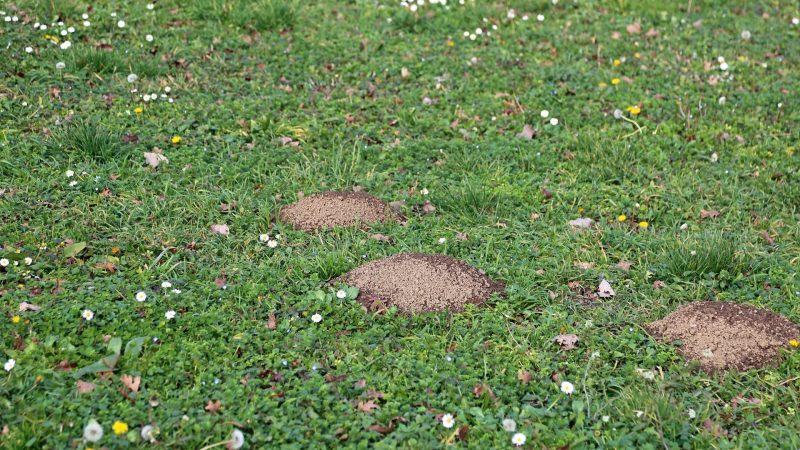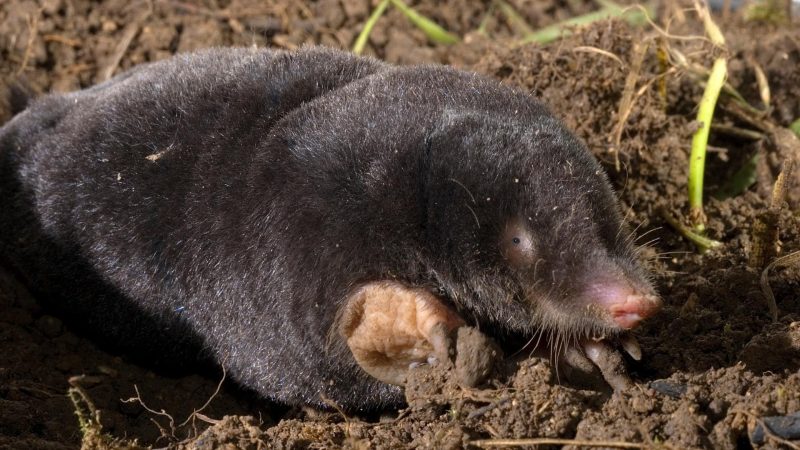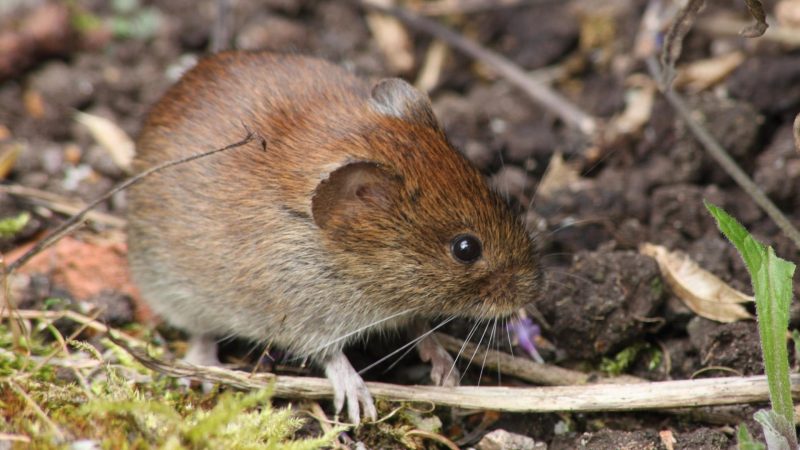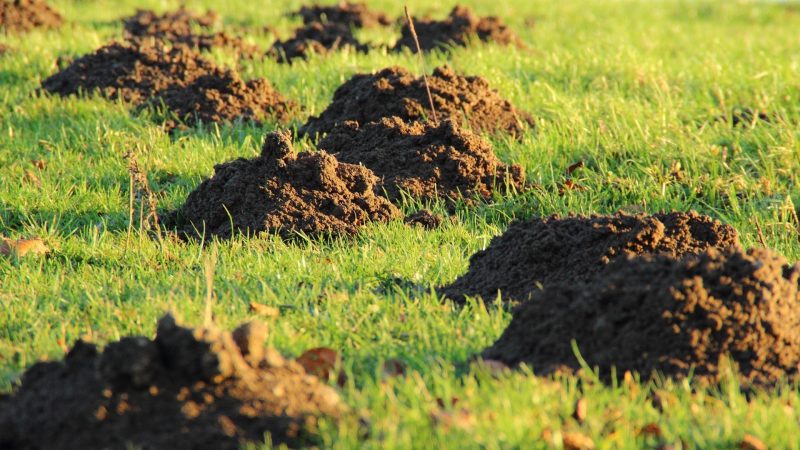Mole and vole do rhyme! You can easily spot the one-letter difference from their names. But some things confuse you when identifying which is which because they’re both furry critters and ground dwellers.
What is the difference between moles and voles? You can distinguish moles by the big, front feet that they use in digging. When it comes to diet, moles feed on grubs, worms, and insects while voles find sustenance from various kinds of plants. Since they’re both ground dwellers, they dig the ground and leave distinct marks. Moles create volcano-shaped, small hills, and voles dig a hole that is the size of a golf ball.
Comparing these two critters is crucial in restraining them from your lawn. You must know that the measures applied for moles are not effective on voles and vice versa. Therefore, read the whole article to be adept in identifying one from another not only with the physical appearance but the behavior as well.
Do I Have a Vole or Mole?

Both vole and mole cause collateral damages to the turf and ornamental plants in your garden or yard. Naturally, you want to determine the culprit. To confirm, you need to look at the signs of damage. If your plants remain untouched and you see furrows, you have to blame the moles.
On the other hand, voles make runways that are covered by grass. Since they tend to eat seeds, bulbs, grass, and flower roots, bite or gnaw marks are mainly seen on plants and trees.
Mole Identification

Moving along the tunnels is easy for moles because there’s no grain on their fur. They dig tunnels to forage food and travel daily, especially when there’s a short supply of food in winter and dry summer. But they’re active all year round and don’t hibernate.
Moles are experts in digging as they can dig 18 feet per hour. They have an amazing ability to make a 150-foot tunnel within a day. Their effort is compensated by consuming grubs, earthworms, and insects that bring about 70% to 100% of their weight.
- Appearance: Tiny eyes, prominent digging claws, paddle-shaped feet, elongated snout, and ears
- Size: 4 to 7 inches
- Color: Blackish-gray
- Lifespan: Four to six years
- Habitat: Grassland, meadow, wetland, woodland, riparian habitats, desert shrew (in arid areas)
- Diet: Earthworms, grubs, insects,
- Threat: Coyotes, domesticated dogs, raccoons
What Is a Mole Damage?
Moles can tear up a turf’s root system and make brown grass trails. Furthermore, they knock over plants on flower beds or gardens as they make tunnels underground.
They do it to collect worms and insects as meals. Anyway, they won’t feed on your plants because they’re not herbivores.
You’ll only need to put your plants in the right position after their rooting system is disturbed by moles. However, the landscape will also be ruined. These things are only done by a single mole since it’s a solitary animal.
Vole Identification

Voles are not solitary. In a burrow system that can be a few hundred square feet, there are several adult voles together with their offspring.
They’re responsible for piles of excavated soil. The usual types of voles that enter yards and gardens are woodland vole and meadow vole.
Voles are rodents that gnaw on shrubs and the base of a tree, especially in winter. They may also ruin potatoes and flower bulbs. Due to their burrowing activity, they accidentally turn over the root system of shrubs and trees. When it happens, the plants lean, or worse, they die back.
- Appearance: Noticeable, black eyes, blunt snout, prominent ears, prominent orange teeth, compact and heavy body, looks like a field mouse with a shorter tail
- Size: 5 to 8 inches
- Color: Black and chestnut brown
- Lifespan: Up to one year
- Habitat: Grassy field, meadow, woodland, lawn, prairie
- Diet: Grass, seeds, flower roots, bulbs
- Threat: Badgers, coyotes, cats, foxes, gulls, hawks, weasels
What Is a Vole Damage?
Since a vole feeds on plants, it can damage a wide range of plants that you plant in your garden. It can also bring destruction to the turf and landscape. Moreover, it feeds on trees by gnawing on the bark. This leaves 1/8” or 3/8” wide of irregular patches and at different angles.
When gnawing proceeds to the roots or trunk of trees, the flow of water and nutrients within the tree’s system is interrupted. Thus, it leads to reduced production, delay in bearing of fruit, overall poor vigor, and yellowish leaf color.
A vole takes advantage of the ground that is covered by snow as it’s the time that there’s no predator around. So, there will be further damage to the tree. This rodent can also climb so they can destroy branches and higher areas of the tree.
Moles vs. Voles | Differences
| Moles | Voles |
| Looks like without eyes and ears | Looks like a field mouse |
| Have long, pointed snout | Have blunt snout |
| 4 to 7 inches long | 5 to 8 inches long; smaller built |
| No external ears | Have prominent ears that are not longer than the fur |
| Tiny eyes | Black noticeable eyes |
| Have blackish-gray fur | Have a combination of black and chestnut brown fur |
| Feed on grubs, worms, and insects | Various kinds of plants |
| Create volcano-shaped, small hills | Dig a hole that is the size of a golf ball |
Controlling Damage From Moles and Voles
Mole Control
When establishing your control measures, be aware that moles are not only most active in spring and fall. They’re on the move early morning and late evening.
- In an active mole tunnel, you can put some pellets or gummy worms with active bromethalin . But be mindful and responsible when using bromethalin as it’s hazardous to humans and pets. It may be absorbed into a water source, and deadly consequences follow.
- Trapping a mole can be done in various ways, such as impaling, pitfall, and scissor-jaw. You may also utilize a choker or harpoon . Setting a trap is the most effective in fall and winter.
- Another effective way to control moles is simply reducing food availability. A grub treatment with Imidacloprid will help you reach this goal. Other options are granular formulations, hose-end sprayers, and ready-to-spray.
- Applying granular formulation is straightforward, but you need to work on irrigation of at least ½” of water. Even so, all of the options work within the turf until the end of the growing season. The application must be done in early July as it won’t be effective in late summer or autumn.
Vole Control
Take note that voles are not fond of feeding in the open area. Most of the damages that they cause are underground or in the tree’s root system. So, you need to target them in the said places.
- Snap traps are the primary tools for vole control. You can add baits like peanut butter, apple, and oatmeal. Once the snap trap is ready with the bait, you can place it next to the exit hole or along the runway.
You need to cover it with a box or bucket since voles don’t like to eat in the open. It’s also a way to keep the bait from other animals and kids. These traps should be set in fall or late winter.
How Can You Tell a Difference Between a Mole and a Vole Tunnel?

Moles create several volcanic-shaped molehills in a lawn that go 12 to 18 inches deep down. They make tunnels for everyday travel and food hunting. On the other hand, voles work on piles of the excavated soil with an entryway that is one and a half inches or two inches wide.
Voles like to be underground so they won’t make surface runways. The tunnels that they make are 3 to 4 inches below the ground. In addition, they go through 1 1/2” wide travel lanes. You’ll also see small ditches without hints of grass.
How Do I Get Rid of Voles or Moles in My Yard?
- Spray your lawn with castor oil .
- Tidy up and replace grass.
- Limit watering and get rid of wet areas.
- Install a barrier or cage your plants.
How Do You Get Rid of Moles and Voles Naturally?
The best natural way to get rid of moles and voles is by planting protective plants such as alliums, daffodils, garlic, fritillarias, marigolds, and shallots. You may also plant castor bean plant, but it’s poisonous, so you have to make sure that kids and pets won’t be exposed to it.
Summary
You can tell the difference between moles and voles by their looks, diet, and their burrowing behavior. Moles are solitary while voles are not. Identifying each of them gives you a better chance to keep them away from your yard and plants. Although there are plants that both bother them, there are different approaches on how to control these critters.
List of Sources
Williams, L. M., Brittingham, M. C. (2007). Moles. PennState Extension.
Smith, B. H. (2020). How to tell the difference between moles & voles? Clemson Cooperative Extension.
Salmon, T. P., Gorenzel, W. P. (2010). Voles (Meadow Mice). University of California Agriculture & Natural Resources.
- How to Get Rid of Turtles | Proven Long-Term Solutions! - August 26, 2023
- How to Get Rid of Kingsnakes | Easy & Humane! - August 26, 2023
- How to Get Rid of Northern Water Snakes | Best Solutions and Preventative Measures! - August 19, 2023
